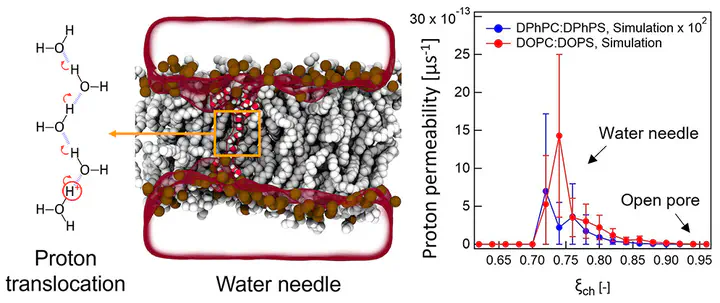Dynamic Second Harmonic Imaging of Proton Translocation Through Water Needles in Lipid Membranes

Abstract
Proton translocation through lipid membranes is a fundamental process in the field of biology. Several theoretical models have been developed and presented over the years to explain the phenomenon, yet the exact mechanism is still not well understood. Here, we show that proton translocation is directly related to membrane potential fluctuations. Using high-throughput wide-field second harmonic (SH) microscopy, we report apparently universal transmembrane potential fluctuations in lipid membrane systems. Molecular simulations and free energy calculations suggest that H+ permeation proceeds predominantly across a thin, membrane-spanning water needle and that the transient transmembrane potential drives H+ ions across the water needle. This mechanism differs from the transport of other cations that require completely open pores for transport and follows naturally from the well-known Grotthuss mechanism for proton transport in bulk water. Furthermore, SH imaging and conductivity measurements reveal that the rate of proton transport depends on the structure of the hydrophobic core of bilayer membranes.